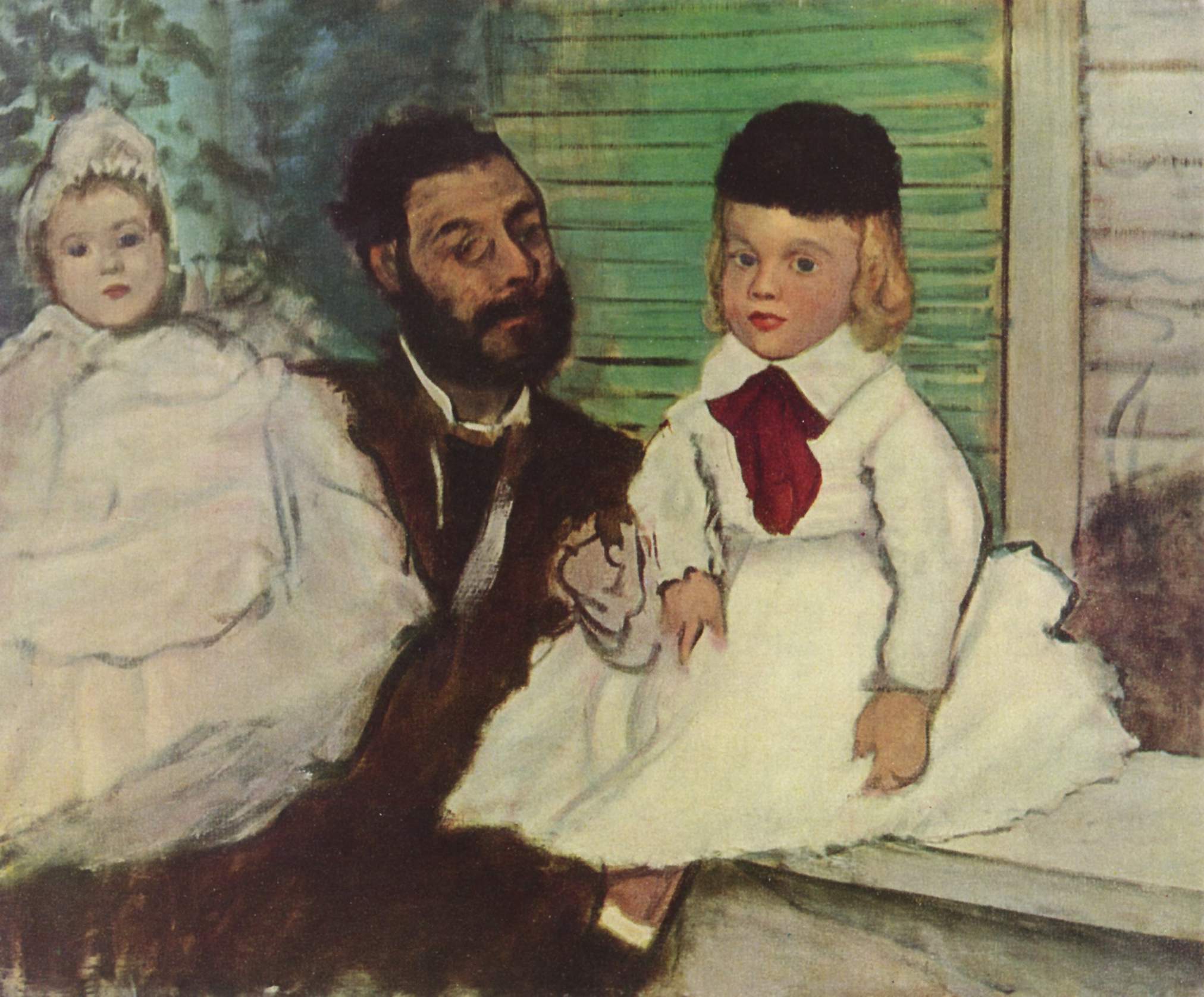art-Degas.com
Edgar Degas 1834-1917
Edgar Degas - Count Lepic and His Daughters 1870
 Count Lepic and His Daughters |
From Foundation E.G. Bührle:
It is not by chance that in the 1870s the portrait loses significance for Degas, and where it appears nevertheless, it has undergone profound transformation. In 1870, only one year after "Madame Camus at the Piano", Degas paints his acqaintance again, now with a Japanese paper fan in her hand, silhouetted against a wall illuminated by a lamp which is out of the picture - here is the ultra conservative Degas, who had worshiped Ingres, and now has become a revolutionary against his will under Japanese influence. In this context must be seen the painting of Count Ludovic Lepic with his two small daughters, probably done just after the Franco-Prussian War. Count Lepic, who was a graphic designer who exhibited with the Impressionists, and a friend of Degas, didn't commission this painting,. which is not, therefore, a picture based on various studies, but which is itself a study which preserves all the freshness of a first impression. The canvas has a light ground, and Degas draws with bright rapid brush-strokes which he leaves untouched, as he had occasionally already done in the 60s. On this brushwork sketch there are only thin transparent coatings, so that the picture has almost the effect of a water-colour. To obtain the best effect from the foamy brightness of the girls dresses, the children are placed in front of the turquoise shutters on the windowsill, where at the same time they frame their father. A few years later Lepic with his daughters, grown in the meantime, appears in "Place de la Concorde", a bold pictorial invention which transcends the limits of portraiture as such.